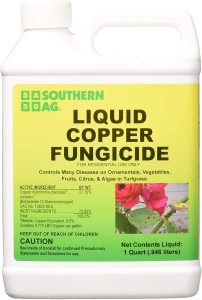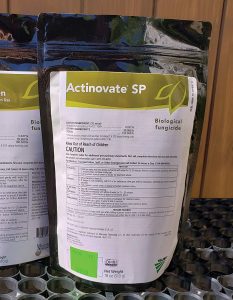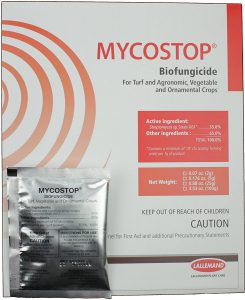Mold is a type of fungi that grows in a multicellular thread-like form, also known as hyphae. The fungi that are responsible for the growth of mold is known as Aspergillus Penicillium. They can be found everywhere, but they are most common in soil because it is their natural habitat. Mold decomposes leaves, roots, and organic debris to form humus. During the growth cycle of mold on organic matter, the mold releases spores that spread around through air currents. The spores aid the reproduction process of mold in every area. Spores are usually more concentrated in areas that have decaying matter present. If these spores are inhaled, they can cause various severe respiratory issues. In order for mold to grow, they need moisture and warmness. They need the organic surface to stay moist for about 24 to 48 hours before it can start growing; they also have temperature requirements before they can grow. The majority of them thrive best in a warm environment, but there are some that can grow in temperatures as low as 2 degrees Celsius. They do not make their energy by photosynthesis like other plants and fungi; instead, they use heterotrophy to get energy from the organic matter they are living in. these molds are usually found in brown, green, fuzzy white, and black colors; they also have a musty smell whether they are indoors or outdoors. If you find black mold, which is easy to detect in your home, or white molds on plants, leaves, and seedlings, then it is time you learn how to remove molds with different natural and organic methods that are effective, to prevent any health problems.
How To Clean Mold
If you need to clean mold off a surface in your home using non-toxic remedies, you can try using a baking soda solution with soap and oil. When this combination comes in contact with the mold, the reaction causes the fungus cell wall to burst, killing the mold. Using soap and oil makes the solution spread evenly and effectively stick to the fungus body. To make a gallon of this solution, use one tablespoon of baking soda, one teaspoon of oil, and one teaspoon of castile soap. Ensure that you use this spray at least once a week to kill mold or prevent mold from infesting new saplings.
Another solution that can get rid of mold is dilute milk spray. Milk is known to have some properties that can weaken and kill white molds on buds and plants. However, if it’s not used properly, it can cause new molds to grow. In order to use it properly, the milk needs to be properly diluted; the portion of water to milk is 9:1. This solution should be applied weekly to prevent the re-growth of the fungus.
How To Get Rid Of Black Mold
If you find black mold in your house, it is best that you do not try to clean it yourself if you aren’t experienced. When black mold is disturbed, it releases a lot f toxic fumes that are harmful to human health. The professionals know how to get rid of it without disturbing it too much. It is best if you leave your house temporarily while the black mold is being cleaned. If you still decide to do it on your own, the best solution is a mixture of ammonia and water to a ratio of 1:1. Evenly spray the solution on the area with the mold, leave it to sit fr 5 to 10 minutes, and then use a scrub or brush to scrub it before cleaning it. Spray the area again if needed or to prevent the appearance of more mold.
We have reviewed some chemicals that can help you effectively get rid of mold on plants. They won’t harm the plant, but they will destroy the mold and leave you with a healthy and flourishing plant. Let’s dive into the list.
The Best Plant Mold Killers Are Reviewed Below
Table of Contents
We took our time to review the best types of plant mold killers that won’t cause harm to your plants. With this guide, you should be able to choose the best plant mold killer that will meet your requirements.
1
Southern Ag 029030 Liquid 32oz Copper Fungicide
This product deals with diseases that are related to fungi and also bacteria. It has a 27% copper diammonium diacetate complex included in the mixture. You can use this product on many fruits, ornaments, vegetables, and live oak. Using this product will be the best solution if you notice any signs of blights, leaf spots, or rust. To make the solution, mix one gallon of water with ½ ounce of the product. It is best to spray it with a hose-end sprayer. When you first notice the presence of any disease, it is vital that you start using the product on the molds to prevent them from totally infecting the seedlings. For the best results, you need to spray the plant every 7 to 10 days.
Key Features:
- Destroys diseases that are caused by fungi and bacteria
- It can control moss and algae
- It has a new formulation that pairs well with hose-end sprayers
- Contains 27.15% Copper Diammonia diacetate complex
Specification:
- Brand: Southern Ag (029030 Liquid 32oz Copper Fungicide)
- Weight: 2 pounds
- Dimensions: 5.5 * 2 * 7 inches
Pros
- It works great for controlling fungus on vegetables and plants
- The copper the product contains doesn’t affect the plant or you in any way
- It also repels snails and slugs because they are sensitive to copper
- The product only kills the fungus on the surface of the plant and doesn’t get inside the plant
Cons
- You have to spray the top and bottom to get effective results; make sure you spray from every angle
- It is best that you do not use this product on bromeliads and orchids
- The spray needs about 6 hours to dry and set into the plant
- This product cannot deal with diseases that have gotten into the roots or stems.
2
Natural Industries Actinovate SP
This product is a powdered concentrate of the patented beneficial bacterium, and it is 100% water-soluble. The active microorganism present in the powder is the Streptomyces lydicus. This product can deal with powdery mold and downy mildew. In order to use it, it has to be made into a liquid solution and sprayed on the area that has mildew or mold. This product can also treat many soilborne diseases such as Rhizoctonia, fusarium, and other root decaying fungi if added to water and applied directly on the soil. The presence of the microbe increases the minerals and nutrients that the plant needs. Once these microorganisms get into the soil, they feed on the plant’s waste and then secrete byproducts that are beneficial to the plant. Plants that have these microbes in their soil have a growth rate that is higher than the others. This product is biological, but it is compatible with both its organic and synthetic counterparts. To make the solution, mix 1 gallon of water with ½ teaspoon of the powder and spray it on the whole plant.
Key Features:
- The powder is water-soluble
- It is OMRI listed organic
Specification:
- Brand: Natural Industries
- Model: Actinovate SP
- Weight: 1 pound
- Dimensions: 9.69 * 5.43 * 1.69 inches
Pros
- It destroys fungal diseases and also provides the plant with necessary nutrients
- It is organic and has no chemicals
Cons
- It is quite expensive
3
Mycostop Biofungicide
The Mycostop Biofungicide is an organic product containing Gliocladiu Catenulatum, an antagonistic parasite that destroys the cell wall of the plant pathogen using chitinase and glucanase enzymes. It goes to reside in the leaves and roots of the plant, causing the pathogens to die. You can apply it by spraying or adding it directly into the soil. This product can prevent the occurrence of a lot of foliar, seed, and root borne diseases. It is not toxic and has the same effect as its chemical counterparts. Make the solution by adding 1 ounce of the product to 1 gallon of water and use a mist spray to apply it.
Key Features:
- Best in treating Fusarium wilt in tomatoes
- It controls pathogenic fungi including Alternaria, Pythium, Rhizoctonia, and Phomopsis
- Listed organic by OMRI
- Makes 50 gallons of full-strength solutions
Specification:
- Brand: Lallemand
- Model: Mycostop Biofungicide
- Weight: 5 gram
Pros
- It is organic and has no harmful side effects on humans
- It is highly effective
Cons
- It needs at least 24 hours to set properly
- It is a bit expensive
4
Growers Trust Powdery Mildew Killer
This product destroys all types of molds and mildew that grow on vegetables and plants and even the type that grows on potted plants. It is made to directly attack the spores of the mold. Powdery mildew can destroy an entire crop, but this product can get rid of it in no time. It helps in the prevention and restoration of the plant. It prevents the spores from germinating by preventing the germ tube from growing, thus killing the pathogen cells. It works by causing an imbalance of the potassium ions located in the mycelium; this slows the spores’ growth. To make the solution, mix 3 ounces of the product in 1 gallon of water and spray on the affected area using a handheld power sprayer.
Key Features:
- Not toxic
- Safe for the environment
- Biodegradable
Specification:
- Brand: Growers Trust
- Model: Powdery Mildew Killer
- Weight: 11 ounces
Pros
- It works quite well
- It makes 5 gallons of solution
Cons
5
F-stop Fertilome
This product is best used on lawns and gardens. It also protects other plants such as roses, fruits, berries, vegetables, and nuts from molds and other types of diseases. It mainly deals with powdery mildew, red threat, leaf black spot, blights, and many more. Apply this product to the plant when the leaves are dry. If the plant is wet when you apply it, it wnt have an effective result.
Key Features:
- Comes ready to use
- Contains 1% of Myclobutanil
Specification:
- Brand: Fertilome
- Brand: F-stop
- Weight: 2.38 pounds
- Dimensions: 8 * 4 * 2 inches
Pros
- It works effectively
Cons
- It is quite expensive
Buying Guide Questions
What plants help with mold? What plant removes 78% of airborne molds?
Some plants can get rid of molds, such as English ivy, spider plant, and peace lily. They are known to remove mold spores from the air and also some toxins.
According to research, the English ivy is one plant that can get rid of 78% of airborne mold in about 12 hours. It can also get rid of different toxins.
What is the best mold killer? Does cinnamon kill mold in soil?
When it comes to household mold, the best mold remover is the RMR-141 Disinfectant and cleaner.
Yes, cinnamon has a natural fungicide that can get rid of the fungus in the soil; just pour the ground cinnamon on the soil and water it a bit.
How do I get rid of mold in my potted plants?
The basic way to remove mold from your potted plant is by using a dampened paper towel to wipe the plant. Ensure you freshen the paper towel after every wipe.
How do I get rid of mold spores in my house?
Use baking soda as a mild disinfectant to clean the affected area and then spray the area with vinegar to prevent the mold from re-growing.
Do dehumidifiers kill mold?
Dehumidifiers do not kill molds, but they reduce the number of spores in the air
What plant can remove mold spores from the air?
The English ivy is the best plant that can get rid of spores from the air.
How long do mold spores live in the air?
The spores of mols are always present in the air; they only start to grow when they settle in a constantly wet area. It takes them 4 to 48 hours to start growing.
What kills mold instantly? What do professionals use to kill mold?
White vinegar is slightly acidic, which makes it able to kill about 82% of all mold species, including black mold.
The majority of professionals use an antimicrobial chemical to kill the mold and then use a sealer to make the affected area less susceptible to water damage. It also helps improve the odor.
Conclusion
With this guide, you’ll learn everything you need to know about mold killers and what is best for your plants. Go through the guide and perform your research to know which fungicide best suits your needs.






